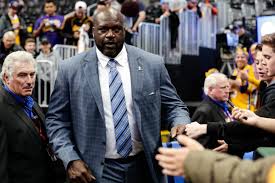JUST IN: Shaquille O’Neal Is Responsible For The 3-Point Revolution In The NBA – Mike D’Antoni.
Mike D’Antoni Attributes NBA’s 3-Point Revolution to Shaquille O’Neal’s Dominance
The evolution of the NBA into a league dominated by three-point shooting is often credited to analytics, innovative coaching, and sharpshooters like Stephen Curry. However, former head coach Mike D’Antoni offers a different perspective, attributing this transformation to the overwhelming dominance of Shaquille O’Neal during his prime.
D’Antoni, renowned for his offensive ingenuity with the “Seven Seconds or Less” Phoenix Suns and later with the Houston Rockets, suggests that O’Neal’s imposing presence in the paint forced the league to adapt. “When you have a player like Shaq, who could control the game from the post, teams had to find alternative strategies to compete,” D’Antoni explained. “This led to an increased emphasis on spacing the floor and utilizing the three-point shot to counteract his interior dominance.”

Shaq’s Impact on Defensive Strategies
During the late 1990s and early 2000s, O’Neal was a formidable force, leading the NBA in field goal percentage multiple times and compelling teams to alter their defensive schemes. His ability to draw double and triple teams created opportunities for perimeter players, inadvertently highlighting the value of the three-point shot. Phil Jackson, O’Neal’s former coach, noted, “Shaq was the major component that allowed defenses to change,” emphasizing how his presence necessitated a shift in defensive focus.
D’Antoni’s Offensive Innovations
Inspired by the need to counteract dominant post players like O’Neal, D’Antoni developed an offensive system that prioritized speed, spacing, and three-point shooting. His “Seven Seconds or Less” philosophy with the Suns revolutionized the game, encouraging quick shots and reducing reliance on traditional post play. This approach not only maximized the strengths of players like Steve Nash and Amar’e Stoudemire but also set a precedent for modern NBA offenses.
D’Antoni’s strategies further evolved during his tenure with the Houston Rockets, where he fully embraced the three-point shot as a primary offensive weapon. Under his guidance, the Rockets became the first team to attempt more three-pointers than two-pointers in a season, solidifying the three-point shot’s central role in contemporary basketball.
A Legacy of Adaptation
While Shaquille O’Neal’s dominance may have inadvertently spurred the NBA’s shift towards perimeter-oriented play, D’Antoni’s willingness to adapt and innovate played a crucial role in institutionalizing the three-point revolution. By challenging traditional norms and embracing a faster, more dynamic style of play, D’Antoni not only countered the influence of dominant big men but also reshaped the strategic landscape of the NBA.
In retrospect, the interplay between O’Neal’s interior supremacy and D’Antoni’s offensive ingenuity underscores the NBA’s capacity for evolution. As teams continue to adapt to emerging trends and player capabilities, the league’s strategic diversity remains a testament to its dynamic nature.







